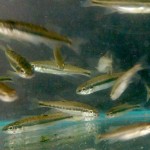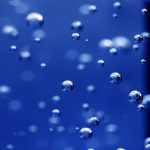From a fisheries management perspective, physical structures, such as screens and fish passes, are utilised to block access to hazardous areas or provide fish with more preferred routes of migration. Behavioural devices that attract or deflect migrating fish to preferred routes are often used to enhance the efficiency of physical structures (e.g. screens at turbine intakes) or as an alternative to them when their application is deemed unviable. However, fish response to the stimuli encountered, and consequently the efficiency of these behavioural devices, can be highly variable. As such, the efficiency of current behavioural devices is inconsistent and site dependent, having been developed by a process of trial and error. Additionally, they are frequently less efficient than physical structures, i.e. screens.
A multitude of stimuli have been used to attract, repel and guide fish, and includes; hydrodynamics (e.g. those created by Louvers), lights (continuous or strobe), shade created by overhead cover, pheromones, electricity, sound, air bubbles, and combinations of these (e.g. air bubbles and sound; air bubbles and strobe light). To further develop efficient behavioural screens and fish pass technology members of ICER are (1) investigating fish behavioural responses to environmental stimuli and causes of variation, and (2) investigating ways to quantify a fish’s ability to detect stimuli and respond in a way deemed appropriate from a management perspective.
Research at ICER is returning to first principles to address knowledge gaps in organism response to environmental stimuli with a view of aiding to future management and conservation efforts.
Acoustics
| Effects of acoustic stimuli on schooling fish | Developing ABR and behavioural audiograms | Testing an acoustic deterrent for adult eel | Impact of noise from marine transport | Effects of acoustic stimuli on lamprey | ||||
| Reactions of Common Carp to sonic bubbles |
Hydrodynamics
| Effects of hydrodynamics on schooling fish | Fish response to velocity gradients | Fish response to turbulence |









